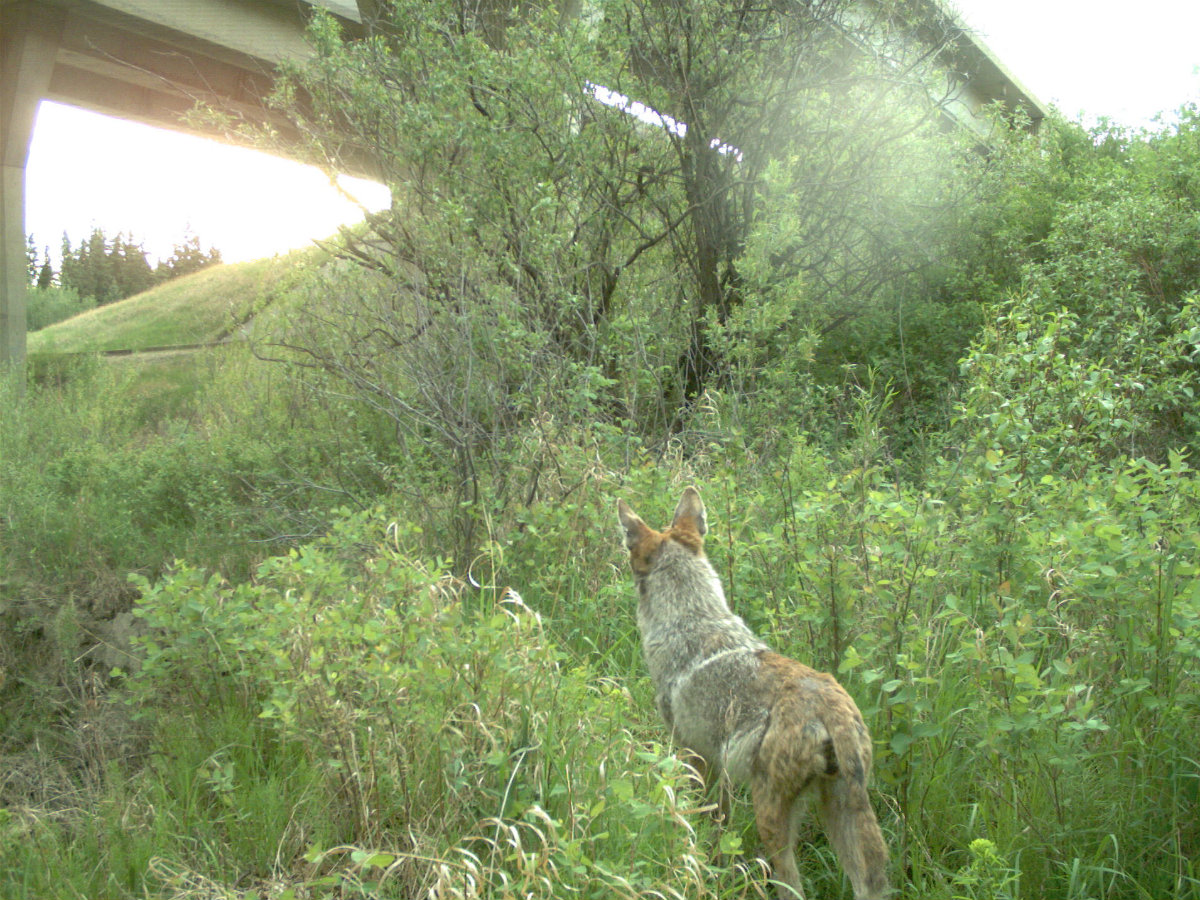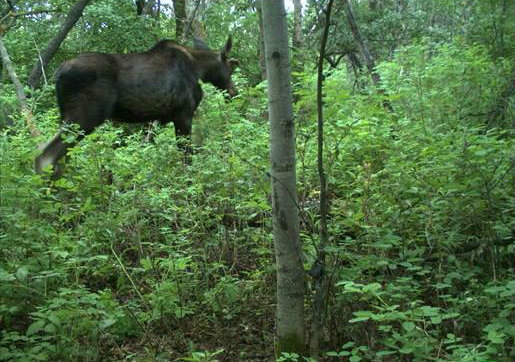
A coyote, captured on camera in Edmonton by the monitoring system of the Urban Wildlife Network. Cameras will be used to detect and study wildlife in urban natural areas like this. Photo credit: University of Alberta & City of Edmonton
The University of Alberta is expanding the world's largest wildlife monitoring network, working alongside the City of Edmonton to bring the first Canadian data to an ongoing study on how wildlife and humans coexist in urban areas.
The United States-originated Urban Wildlife Information Network (UWIN) is a multi-city study that seeks to help people and animals thrive together by gathering and analyzing data on urban biodiversity and discovering and applying solutions to human-wildlife conflicts. The Urban Wildlife Institute of the Lincoln Park Zoo in Chicago launched the study in 2012.
Edmonton is the first city outside of the United States to become park of the UWIN program, with the University of Alberta and City of Edmonton joining eleven partner organizations across the US, including zoos, universities, and the National Park Service.
"We're pleased to be a part of the collaborative effort to understand wildlife in cities and excited to find out more about our own city," said co-lead Colleen Cassady St. Clair, professor in the Department of Biological Sciences. "So far, we've detected moose, deer, porcupines, and coyotes-though no raccoons yet. We hope to collect information about urban wildlife to support better ecological practices in Edmonton and beyond."
Four times a year, biologists install more than 100 cameras across the Chicago area along three 50-kilometre transects and the lakefront. The cameras-many strapped to trees and posts in parks, cemeteries, forest preserves and golf courses-are motion-triggered and snap digital images of wildlife as they pass by, with over 100,000 photos taken each year. Now, Edmonton has begun sharing data as UAlberta and the City of Edmonton snap photos of our own Canadian wildlife.
"In terms of both wildlife diversity and green areas, Edmonton has a lot to contribute to the network," said St. Clair. "The information being put together builds a richer understanding of human-wildlife conflict and helps us work towards more effective strategies to coexist with animal populations."
The first findings from UWIN have been submitted to Frontiers in Ecology and the Environment and will be published in the coming months. One early takeaway from the report is that while deer have been spotted in every member of the twelve-city network, the largest species spotted to-date is quintessentially Canadian; moose, caught on camera in Edmonton.
